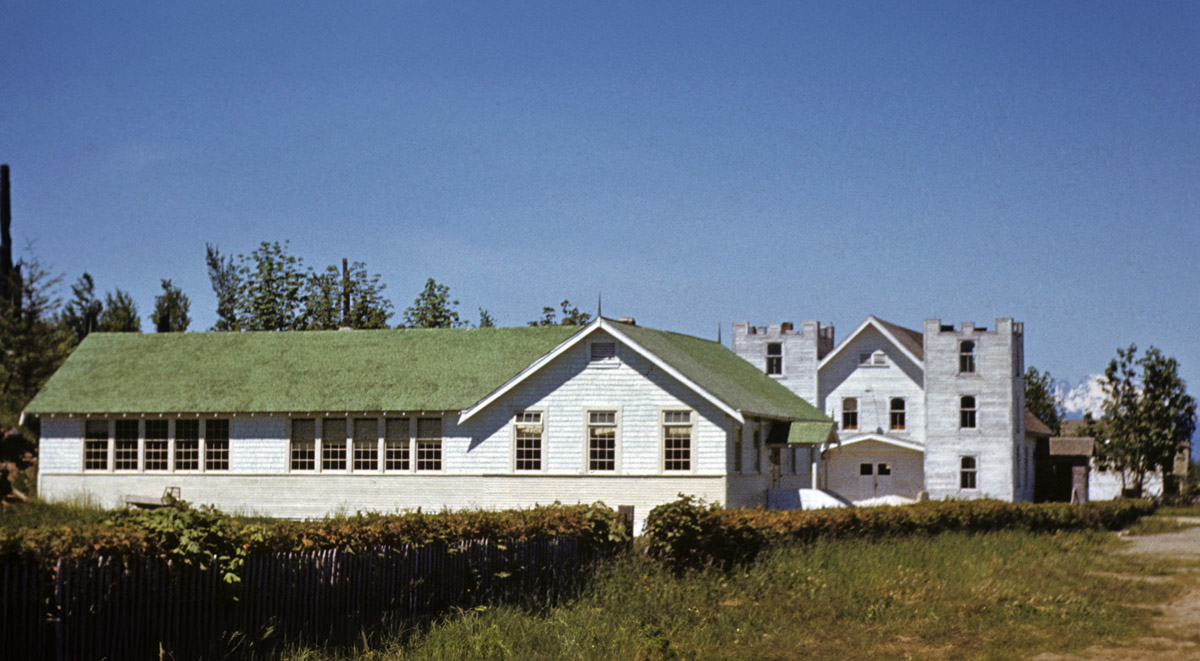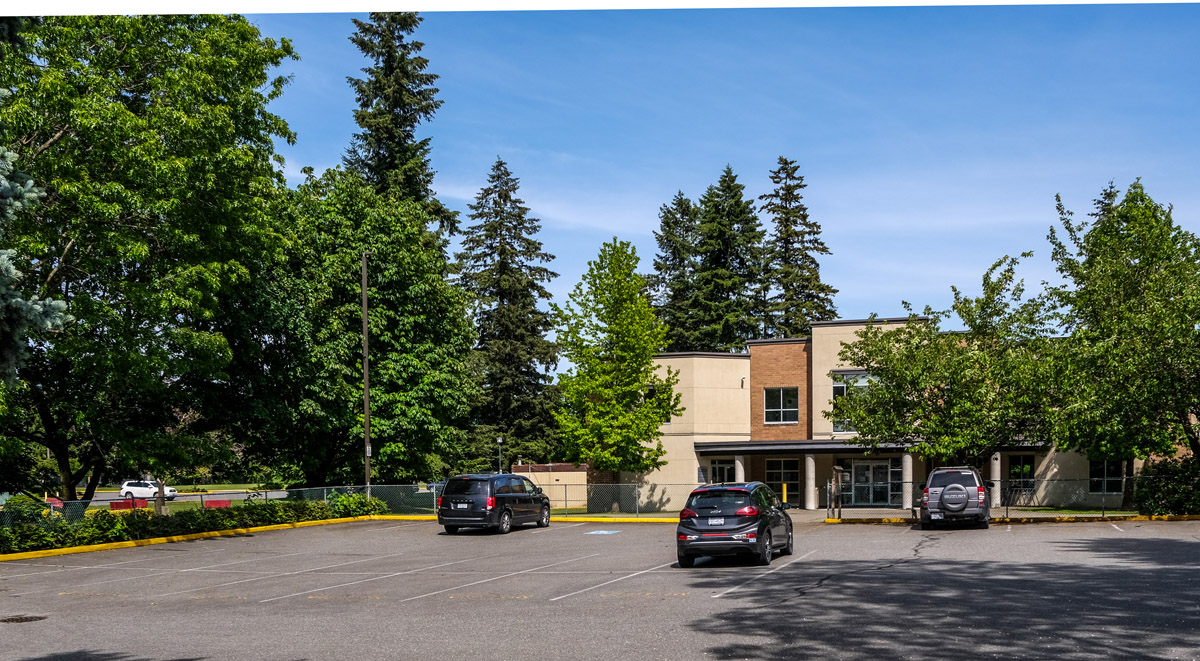Mennonite Brethren Bible Institute
The Mennonite Brethren Bible Institute originated from a denomination that valued biblical literacy. Mennonites in British Columbia established local congregations and Bible schools to counter secularism and train church workers. The South Abbotsford Bible School, founded in 1936, faced temporary suspension during World War II but continued to grow. Renamed Mennonite Brethren Bible School, it expanded its curriculum, gained community support, and relocated to Clearbrook in 1955. Other Bible schools in British Columbia merged with it to form MBBI. The school adapted to societal changes in the 1960s, adding new facilities and programs. In 1970, it merged with Bethel Bible Institute to become Columbia Bible Institute, a collaboration between two Mennonite denominations.
* * *
The Mennonite Brethren Bible Institute (MBBI) had its roots in a denomination that placed great importance on biblical literacy. As Mennonites settled in British Columbia, they wasted no time in establishing local congregations and Bible schools. These institutions were seen as a means to protect young people from the prevailing secularism of the time and to nurture a steady supply of workers for church ministries.
In 1932, shortly after the founding of the South Abbotsford Mennonite Brethren Church, Kornelius H. Klassen gathered a group of like-minded individuals to plan a Christian school. Their vision materialized on September 26, 1936, with the launch of an evening program led by Cornelius C. Peters, a teacher trained in Europe. About 30 students enrolled in classes that first winter. Although the South Abbotsford Bible School faced a temporary suspension in 1941 due to the upheavals of World War II, the enthusiasm for Christian education persisted.
Undeterred by wartime conditions, the school purchased a vacated tabernacle on Marshall Road in 1943 and relocated it to the South Abbotsford MB church property. With the appointment of Franz C. Thiessen as principal and Wilfred Reimche as instructor, the school, now known as Bethel Bible School, found a more permanent home. As a day program was introduced, the institution experienced a decade of steady growth. Jacob F. Redekop assumed the role of principal and spearheaded the introduction of a four-year course of studies, followed by an advanced fifth-year program. Bethel Bible School gained support from six Abbotsford area congregations, solidifying its presence within the community.
By the late 1940s, the school's name had changed to Mennonite Brethren Bible School, and its graduates began assuming ministry responsibilities in local congregations and beyond. The school expanded its curriculum to include a wide range of courses, from Bible doctrine and Church history to missions, music, and Sunday school teaching. A weekly radio program further spread the school's message and provided inspiration to listeners throughout the Fraser Valley.
In 1955, the school relocated to Clearbrook after purchasing land on Clearbrook Road and constructing a new building. This facility, costing $27,000, featured classrooms, a library, an auditorium, recreational rooms, and administrative spaces. By the end of the 1950s, smaller Bible schools in British Columbia merged into the Mennonite Brethren Bible Institute (MBBI), which was owned by the British Columbia Mennonite Brethren Conference. Notable educators during this period included Jacob Redekop, John B. Epp, Henry H. Nikkel, Abram H. Wieler, George Konrad, and Henry C. Born.
The social changes and urbanization of the 1960s brought new challenges to the Bible school. Students clamored for higher-quality education and more engaging learning experiences. In response, the school board acquired a building from the Abbotsford Airport, originally used as an army barracks, to create dormitory space in 1962. Redekop Hall was constructed in 1966, followed by Centennial Hall in 1967. A new administrative building with a chapel, classrooms, offices, and music rooms was also completed in 1967. A student-life program and increased focus on athletics enriched campus life. During Henry Born's presidency, the school seriously considered seeking academic accreditation from the American Association of Bible Colleges.
In the late 1960s, the Conference of Mennonites in British Columbia faced declining enrollment at their denominational school, Bethel Bible Institute. After careful deliberation, the two conferences decided to merge their schools, forming a single institution with a shared board of governance. Thus, in the fall of 1970, Columbia Bible Institute came into existence with Peter R. Toews as President and an initial enrollment of 186 students. This groundbreaking collaboration marked the first time these two Mennonite denominations joined forces to provide theological training for their youth, cementing a significant milestone in their shared history.
In 1932, shortly after the founding of the South Abbotsford Mennonite Brethren Church, Kornelius H. Klassen gathered a group of like-minded individuals to plan a Christian school. Their vision materialized on September 26, 1936, with the launch of an evening program led by Cornelius C. Peters, a teacher trained in Europe. About 30 students enrolled in classes that first winter. Although the South Abbotsford Bible School faced a temporary suspension in 1941 due to the upheavals of World War II, the enthusiasm for Christian education persisted.
Undeterred by wartime conditions, the school purchased a vacated tabernacle on Marshall Road in 1943 and relocated it to the South Abbotsford MB church property. With the appointment of Franz C. Thiessen as principal and Wilfred Reimche as instructor, the school, now known as Bethel Bible School, found a more permanent home. As a day program was introduced, the institution experienced a decade of steady growth. Jacob F. Redekop assumed the role of principal and spearheaded the introduction of a four-year course of studies, followed by an advanced fifth-year program. Bethel Bible School gained support from six Abbotsford area congregations, solidifying its presence within the community.
By the late 1940s, the school's name had changed to Mennonite Brethren Bible School, and its graduates began assuming ministry responsibilities in local congregations and beyond. The school expanded its curriculum to include a wide range of courses, from Bible doctrine and Church history to missions, music, and Sunday school teaching. A weekly radio program further spread the school's message and provided inspiration to listeners throughout the Fraser Valley.
In 1955, the school relocated to Clearbrook after purchasing land on Clearbrook Road and constructing a new building. This facility, costing $27,000, featured classrooms, a library, an auditorium, recreational rooms, and administrative spaces. By the end of the 1950s, smaller Bible schools in British Columbia merged into the Mennonite Brethren Bible Institute (MBBI), which was owned by the British Columbia Mennonite Brethren Conference. Notable educators during this period included Jacob Redekop, John B. Epp, Henry H. Nikkel, Abram H. Wieler, George Konrad, and Henry C. Born.
The social changes and urbanization of the 1960s brought new challenges to the Bible school. Students clamored for higher-quality education and more engaging learning experiences. In response, the school board acquired a building from the Abbotsford Airport, originally used as an army barracks, to create dormitory space in 1962. Redekop Hall was constructed in 1966, followed by Centennial Hall in 1967. A new administrative building with a chapel, classrooms, offices, and music rooms was also completed in 1967. A student-life program and increased focus on athletics enriched campus life. During Henry Born's presidency, the school seriously considered seeking academic accreditation from the American Association of Bible Colleges.
In the late 1960s, the Conference of Mennonites in British Columbia faced declining enrollment at their denominational school, Bethel Bible Institute. After careful deliberation, the two conferences decided to merge their schools, forming a single institution with a shared board of governance. Thus, in the fall of 1970, Columbia Bible Institute came into existence with Peter R. Toews as President and an initial enrollment of 186 students. This groundbreaking collaboration marked the first time these two Mennonite denominations joined forces to provide theological training for their youth, cementing a significant milestone in their shared history.


